Clementhorpe and Bishopthorpe Road
As with Nunnery Lane, this has no historic inns, rather a selection of beerhouses and fully licenced pubs, including two built in the 1930s.
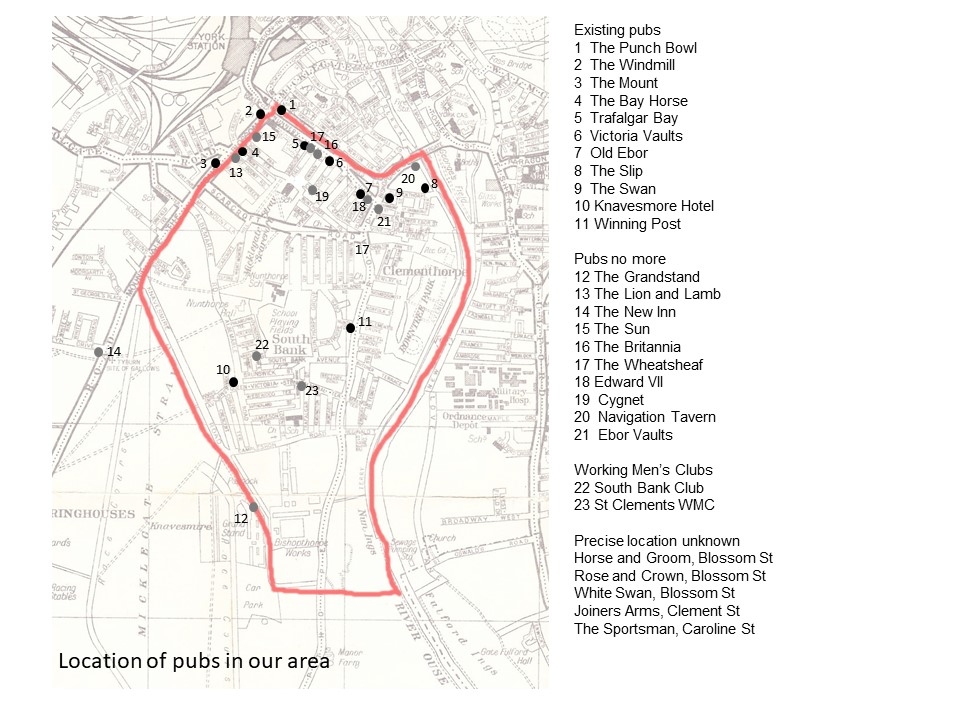

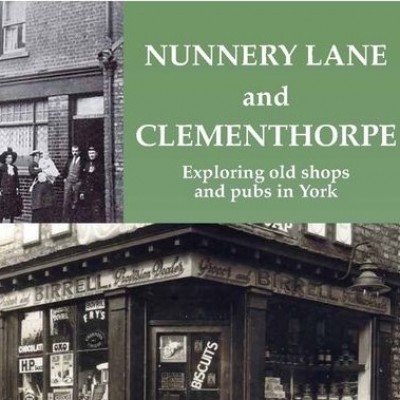
View navigation

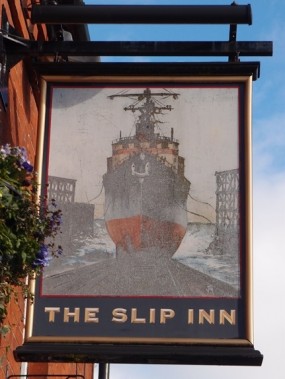 The Slip in Clementhorpe. This pub is first recorded in 1840, when it was probably a beerhouse. It was rebuilt around 1902 and is very close to the site of that vanished church where ale was probably sold in medieval times (the fragmentary remains of the associated nunnery are visible nearby). The pub was named because of a previously adjacent 215-foot-long double slipway, used for launching boats of a modest size into the nearby Ouse. You might think from the present sign that the 20,000-ton HMS Dreadnought was launched there, but the actual boats would have been on average around a hundred times smaller! The Chief Constable’s report of 1902 notes “Food supplied if asked for.” In 1883 the landlord was fined ten shillings (50p – or about £60 in today’s money) after his daughter served a police constable while on duty. I would have thought that the constable was to blame! This pub recently had plans to construct a micro-brewery, but it was decided instead to expand the pub.
The Slip in Clementhorpe. This pub is first recorded in 1840, when it was probably a beerhouse. It was rebuilt around 1902 and is very close to the site of that vanished church where ale was probably sold in medieval times (the fragmentary remains of the associated nunnery are visible nearby). The pub was named because of a previously adjacent 215-foot-long double slipway, used for launching boats of a modest size into the nearby Ouse. You might think from the present sign that the 20,000-ton HMS Dreadnought was launched there, but the actual boats would have been on average around a hundred times smaller! The Chief Constable’s report of 1902 notes “Food supplied if asked for.” In 1883 the landlord was fined ten shillings (50p – or about £60 in today’s money) after his daughter served a police constable while on duty. I would have thought that the constable was to blame! This pub recently had plans to construct a micro-brewery, but it was decided instead to expand the pub.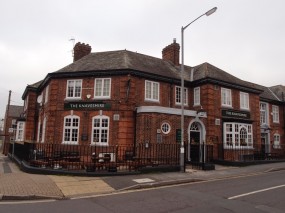 The Knavesmire Hotel in Albermarle Rd. Built and opened in 1932, when a licence was transferred from a pub in the Hungate area. Building this pub was something of a landmark. It was the first pub to get a licence in the South Bank area, after many years of trying. Previously the temperance movement had successfully blocked similar efforts. Owned until 1956 by the major York brewer J. J. Hunt, it initially and proudly advertised itself as being at the South Bank terminus of the then tram service, and no doubt did very well on race days at the nearby Knavesmire, after which it was named.
The Knavesmire Hotel in Albermarle Rd. Built and opened in 1932, when a licence was transferred from a pub in the Hungate area. Building this pub was something of a landmark. It was the first pub to get a licence in the South Bank area, after many years of trying. Previously the temperance movement had successfully blocked similar efforts. Owned until 1956 by the major York brewer J. J. Hunt, it initially and proudly advertised itself as being at the South Bank terminus of the then tram service, and no doubt did very well on race days at the nearby Knavesmire, after which it was named.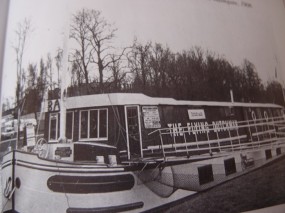 The Barge on the Ouse along Terry Av. This was just as its name suggests, a converted floating barge. Described by Hugh Murray as 'an inn and night club', it was there from 1979 until it sank in 1984, to be quickly replaced by another converted barge. This one was called The Flying Dutchman. This latter barge only got planning permission for a year and when this was not renewed, the area’s floating drinks businesses came to an end.
The Barge on the Ouse along Terry Av. This was just as its name suggests, a converted floating barge. Described by Hugh Murray as 'an inn and night club', it was there from 1979 until it sank in 1984, to be quickly replaced by another converted barge. This one was called The Flying Dutchman. This latter barge only got planning permission for a year and when this was not renewed, the area’s floating drinks businesses came to an end.